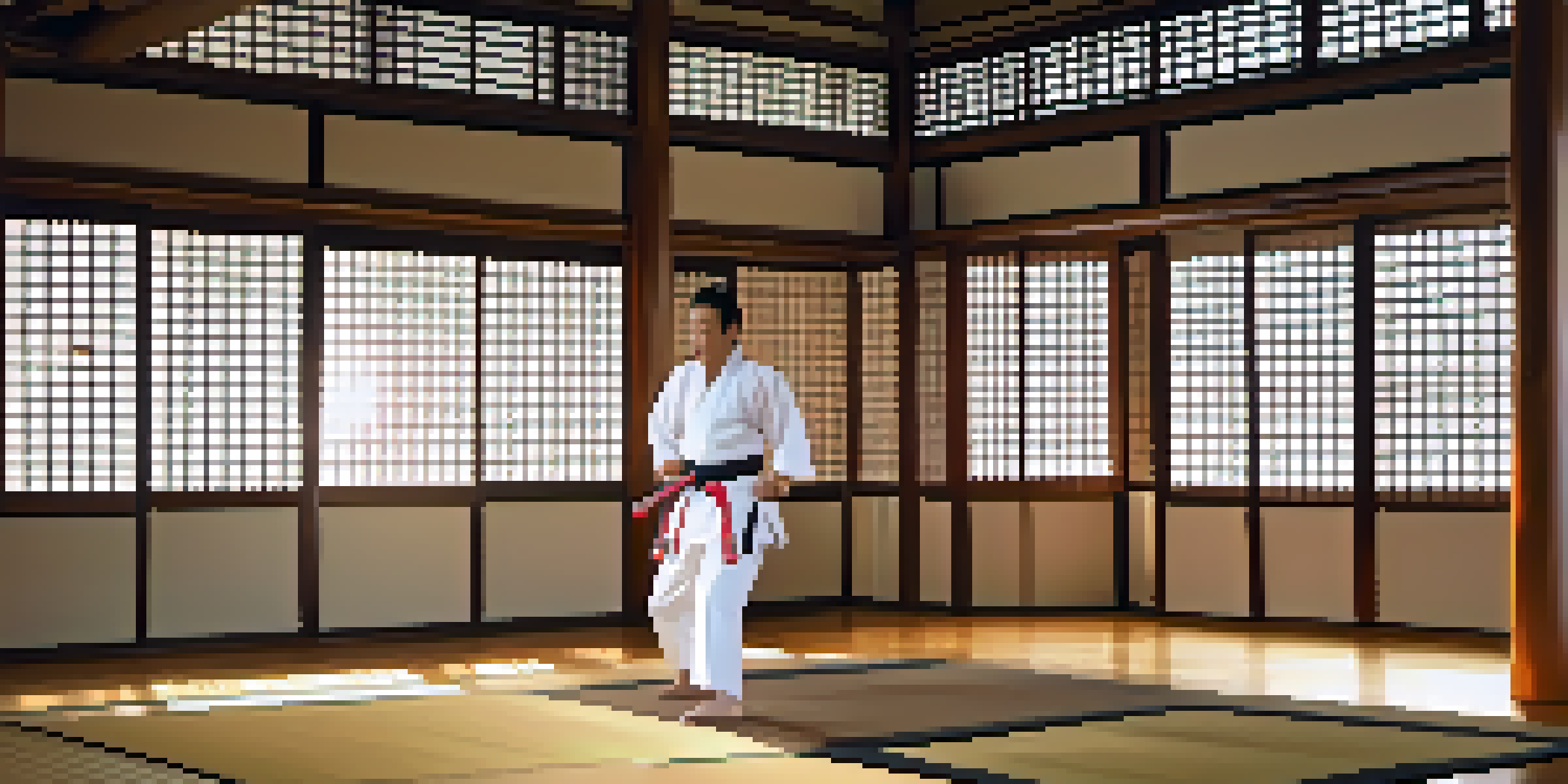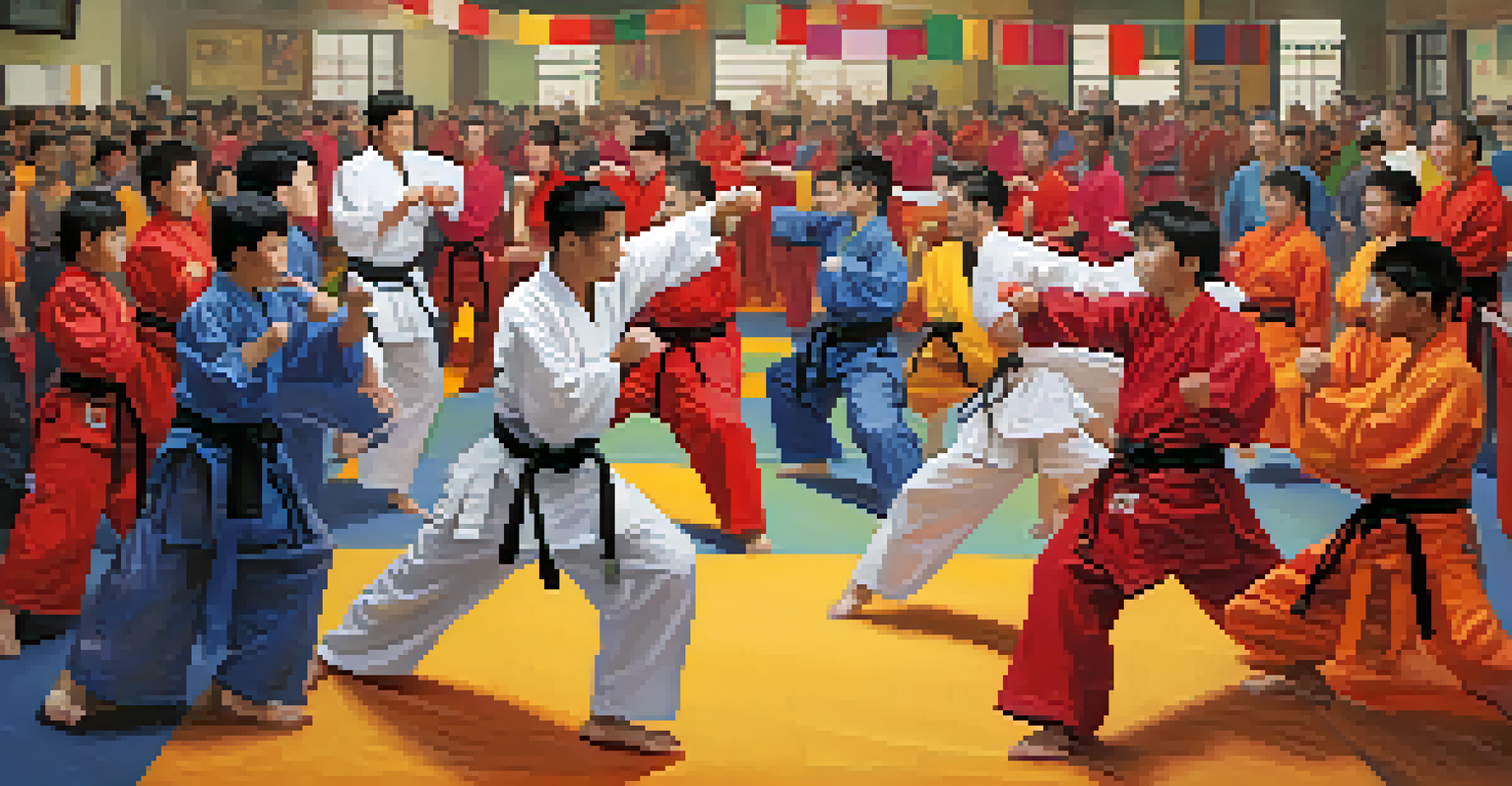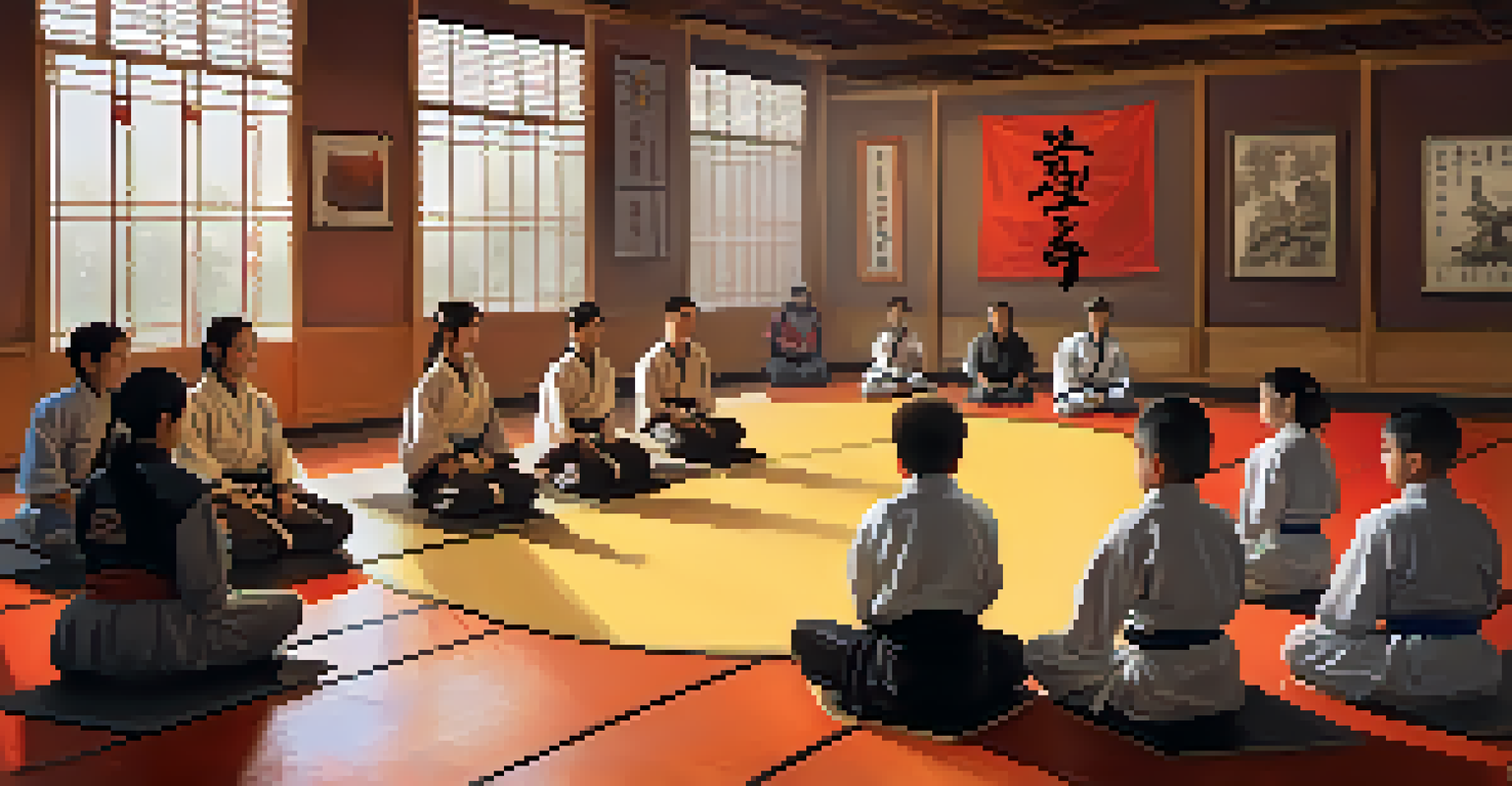Cultural Appropriation vs. Cultural Appreciation in Martial Arts

Defining Cultural Appropriation in Martial Arts
Cultural appropriation occurs when elements of one culture are used by another, often without permission or understanding. In martial arts, this can manifest when practitioners adopt techniques or symbols from a culture, disregarding their significance. An example might be wearing traditional attire without knowing its history or meaning, which can lead to offense or misrepresentation.
Cultural appreciation is about the understanding of the history and significance of a practice, while cultural appropriation is about taking without understanding.
This concept can be particularly troubling in martial arts, where the practices often carry deep spiritual and historical roots. For instance, the use of an Indigenous dance or a traditional Japanese kata can become problematic if done flippantly. The lack of respect for the cultural context can undermine the rich heritage that these practices represent.
Ultimately, cultural appropriation in martial arts can foster a cycle of disrespect and misunderstanding. It's crucial for practitioners to recognize the origins of the techniques they practice and to approach them with the respect they deserve. Ignoring these nuances can dilute the authenticity of martial arts and alienate those who hold them dear.
Understanding Cultural Appreciation in Martial Arts
Cultural appreciation, on the other hand, involves recognizing and valuing the cultural significance of martial arts practices. It’s about engaging with a culture respectfully and thoughtfully, embracing its teachings while honoring its origins. For example, studying a martial art involves learning about its history, philosophy, and the values it embodies.

When martial artists immerse themselves in the culture of their chosen discipline, they foster deeper connections and understanding. This might include attending cultural events, participating in community gatherings, or even studying the language associated with the martial art. Such actions show a commitment to genuinely understanding and respecting the culture.
Cultural Appropriation vs. Appreciation
Understanding the difference between cultural appropriation and appreciation is crucial for martial artists to engage respectfully with the traditions they practice.
In this way, cultural appreciation enriches the practice of martial arts. It allows for a meaningful exchange between cultures, where knowledge and respect flow both ways. Practitioners who appreciate the art form not only improve their skills but also contribute positively to the cultural tapestry of martial arts.
The Fine Line: Appropriation vs. Appreciation
The distinction between cultural appropriation and appreciation can often be blurred, leading to confusion. Many practitioners genuinely love their martial arts practice but may inadvertently cross the line into appropriation. Understanding this fine line requires ongoing self-reflection and education.
The best way to understand a culture is to embrace it with respect and an open heart, not to take from it without context.
For instance, a martial artist might admire a traditional form and want to incorporate it into their practice. However, if they do so without acknowledging its cultural significance or history, they risk appropriating rather than appreciating. It’s essential to ask questions and seek guidance to ensure that actions align with respect and understanding.
Navigating this complex landscape involves empathy and a willingness to learn. By being mindful of the cultural roots of martial arts, practitioners can avoid appropriation and instead celebrate the rich diversity that these practices offer.
Respecting Cultural Context in Martial Arts Practices
Context is key when discussing cultural elements in martial arts. Each technique, uniform, and ritual carries specific meanings that are often tied to cultural beliefs and history. When these elements are removed from their context, they can lose their significance and even offend those for whom they are meaningful.
For example, practicing a bow before entering a dojo is not just a formality; it reflects respect for the art and its traditions. Failing to understand this can lead to a superficial practice that lacks depth. Respecting cultural context encourages practitioners to engage more fully and meaningfully with their martial arts journey.
Importance of Cultural Context
Respecting the cultural context of martial arts practices enhances the depth of engagement and fosters a more inclusive community.
Acknowledging the context also fosters a more inclusive environment where practitioners can share and learn from one another. This respect creates a community that values the heritage of martial arts while promoting understanding and collaboration among diverse practitioners.
The Role of Education in Martial Arts
Education plays a pivotal role in bridging the gap between cultural appropriation and appreciation. Many martial arts schools incorporate teachings about the history and philosophy behind their practices, helping students understand their roots. This educational component is vital for fostering respect and awareness.
Workshops, seminars, and guest lectures can further enrich a student's understanding of the cultural contexts surrounding their martial arts practice. By learning directly from cultural representatives or experts, practitioners gain insights that deepen their respect for the art form. This creates an environment where appreciation flourishes.
Moreover, educated practitioners are better equipped to navigate complex cultural dynamics. They can confidently share their knowledge with others, helping to cultivate a culture of respect and understanding within the martial arts community.
Celebrating Diversity in Martial Arts
Martial arts are a melting pot of diverse cultures, each contributing unique practices and philosophies. Celebrating this diversity enriches the martial arts experience for everyone involved. Understanding and appreciating different styles can lead to a broader perspective on self-defense, discipline, and personal growth.
For example, studying Brazilian Jiu-Jitsu alongside Karate can provide insights into different approaches to technique and mindset. By embracing diversity, practitioners not only enhance their skills but also cultivate respect for the traditions from which these arts originate. This cross-cultural exchange can lead to innovative practices that honor the roots of each style.
Education Fosters Respect
Education plays a vital role in bridging cultural gaps, enabling practitioners to navigate the complexities of martial arts with respect and understanding.
Moreover, celebrating diversity helps to break down barriers within the martial arts community. It fosters an atmosphere of mutual respect and collaboration, where practitioners can learn from one another’s experiences and backgrounds. This inclusivity ultimately strengthens the martial arts community as a whole.
Creating a Respectful Martial Arts Community
Building a respectful martial arts community starts with open dialogue and education. Encouraging conversations about cultural significance and the impact of appropriation can help practitioners navigate these complex issues. Creating safe spaces for discussions allows individuals to share their perspectives and experiences.
Martial arts schools and dojos can play a crucial role by implementing policies that promote cultural sensitivity and awareness. By offering resources and training on cultural respect, schools can ensure that all practitioners approach their practice with the right mindset. This proactive approach demonstrates a commitment to fostering an inclusive and respectful environment.

Ultimately, a respectful community thrives on understanding and collaboration. When martial artists come together to support one another, they create a vibrant atmosphere where everyone can learn and grow. By prioritizing respect and appreciation, the martial arts community can honor its diverse roots while welcoming new practitioners.